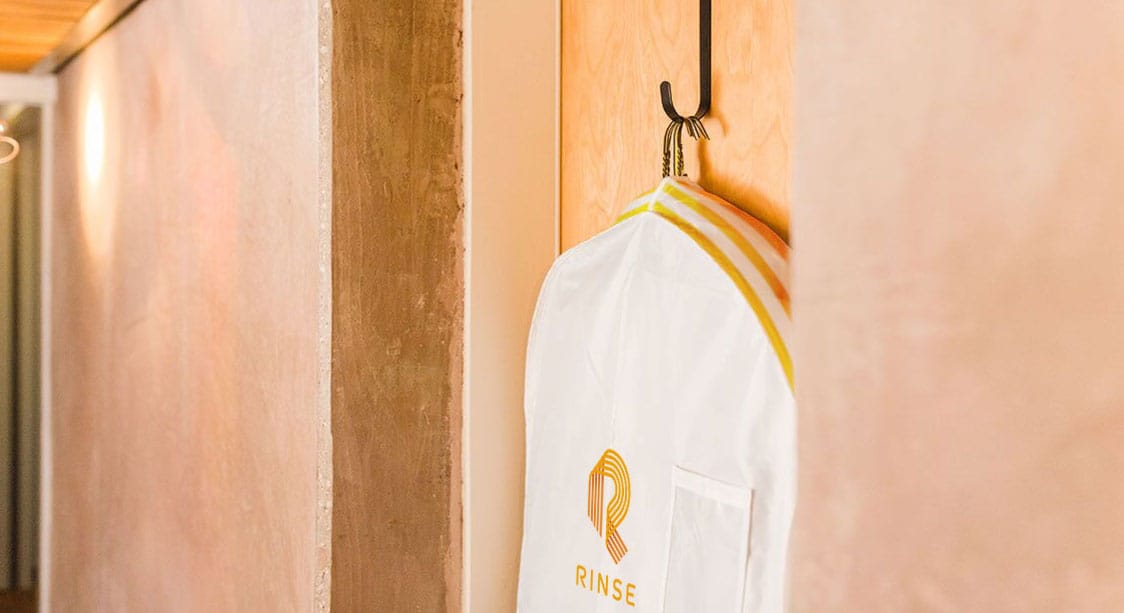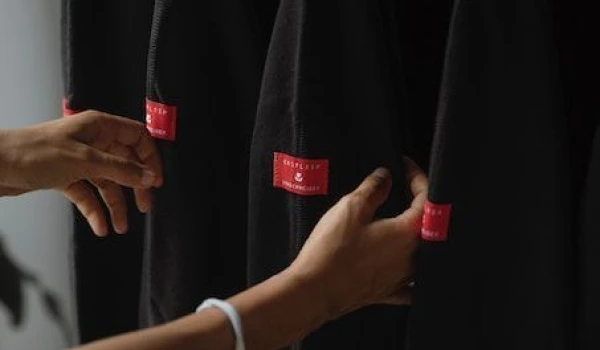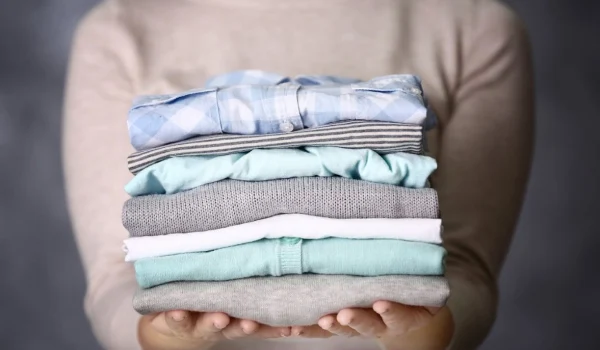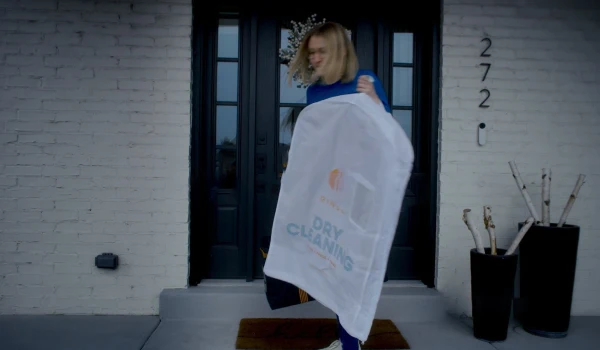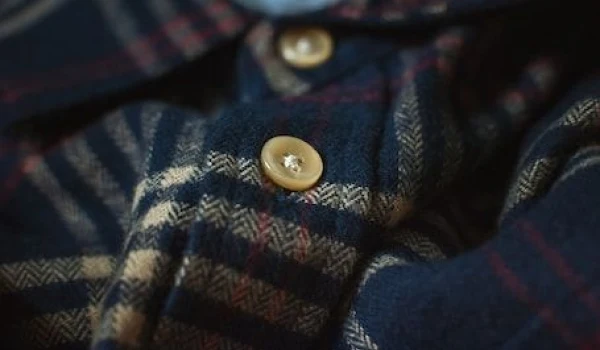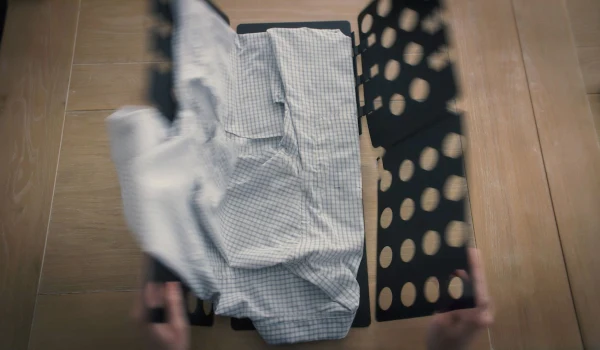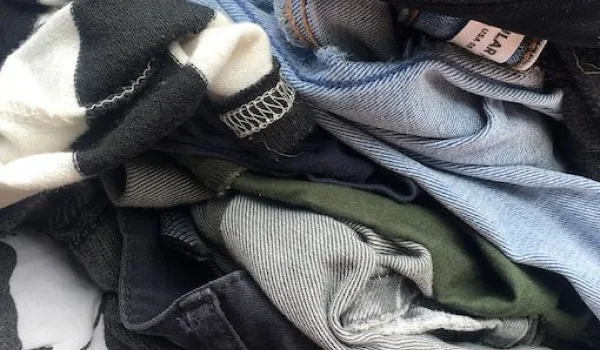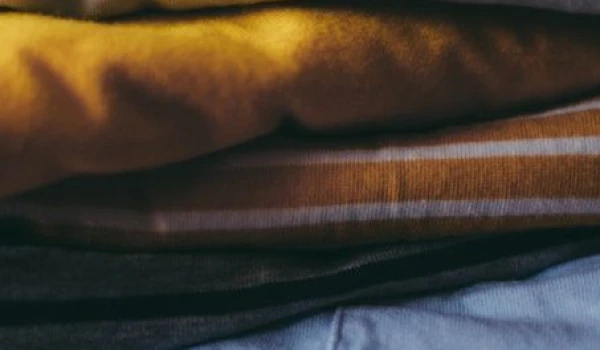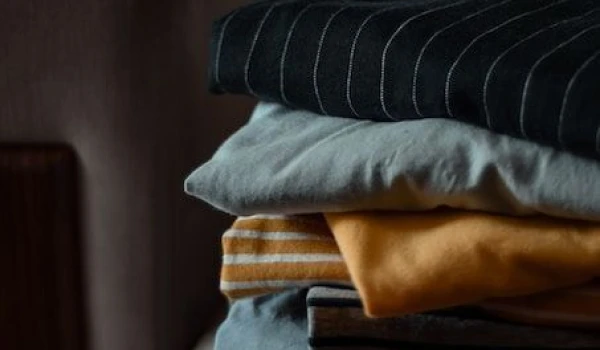Care
Clothing care tips to make your wardrobe last

Hundreds of years ago, possessing silk garments was a sign of luxury reserved for the fashion focused few who could afford it. Centuries later, silk still remains a coveted material (albeit a bit more affordable) -- and for good reason! Not only does silk look and feel fabulous, but it is lightweight, versatile, and a surprisingly strong fiber. The right silk top looks great dressed up for a day at the office, or paired with your favorite jeans for a more casual look.
Properly cared for, silk can add a striking and classy element to any wardrobe. Your best bet for keeping your silk in beautiful condition is to trust it to a professional dry cleaner. However it's still helpful to know the basics of how to care for your silk garments.
Here are answers to some of the most commonly asked questions about silk:
1. Is silk is more delicate than other materials?
Yes, silk is the most delicate type of material commonly used to make clothing. Unlike other materials such as cotton, which is much more forgiving when it comes to laundering and fabric care, silk is particularly susceptible to stains and damage from heat and light. While each silk fiber is surprisingly strong, it's important to educate yourself about how to properly care for your silk garments to avoid stains and damage.
2. Why do stains sometimes show up after I have a silk garment cleaned?
Even after the dry cleaning process, it's possible for stains to emerge on silk. What happens sometimes is that when a garment is exposed to heat or light, set in stains that weren't visible previously become visible, and they can actually change the color of the silk material. A classic example of this is perspiration stains near the underarm region of a top. A solution to this would be let your cleaner know what caused the stain on your garment to the best of your knowledge.
3. What can I do to keep my silk garments looking great?
Despite your best efforts, accidents and stains happen to the best of us. If you find yourself at having a slightly embarrassing mealtime mishap, there’s no need to worry! There are steps that you can take to prevent the stain from settling further into the fibers, and therefore increase the chances of totally removing the stain. When the mishap occurs, try your best to address the stain as quickly as possible since the quicker you can tend to it, the more likely you are to preserve the fabric. Use a clean damp cloth to gently wipe the stained area, taking care not to rub vigorously or apply undue pressure. You should also try to avoid exposing the garment to excess light and heat, which will expedite the stain setting process.
4. What should I tell my cleaner about cleaning silk?
Silk lovers, take note! This is an important question. You may not have realized it before, but there is a science to stain removal. Dry cleaners use a wide variety of cleaners and solvents to remove even the most difficult stains, so even though you might not think it really matters what the ingredients in that delicious red sauce were, it does. Your dry cleaner will choose a different stain remover to tackle the remnants of a creamy red sauce than they would to remove a plain tomato based sauce. Vegetable based stains are chemically different from protein based stains, and each stain requires different treatment. When you go to your cleaner, you should be try to be as specific as possible about what caused the stain so they’ll know exactly how to treat it.
Readers also liked:
1.) Your Complete Guide To Caring For Cashmere

Introduction
You spent more time than you care to admit this morning picking out the perfect outfit. At the center of your ensemble is that silk top you just bought after eyeing it for weeks. You're on the way to the office, coffee in hand, and ready to face whatever the day brings… uh oh... you spilled coffee all over yourself… the day is officially over.
If the above is a recurring theme in your life, or you just happen to have silk clothes that you want to take care of properly, this guide is for you.
Silk fabric is a luxury – a delicate one. This means that it requires special care and attention when cleaning and removing stains. Doing so ensures odors don't set in and the fabric's integrity and shape are kept – ensuring garment longevity.
5 Tips to Get Stains Out of Silk
Here are a few important practices to employ when removing stains from your silk clothing:
Use Gentle Cleaning Methods
Water stains (juice, coffee) require mild solutions – laundry detergent or gentle soap diluted in water will suffice. There is no need for harsher methods or chemicals (don't use bleach) at this time.
Test in an Unseen Area
Start any cleaning method (whether you're using a stain remover, laundry detergent, vinegar, etc.) in a small, unseen part of the garment as a test. Known as a colorfastness test, check for any discoloration, fading, bleeding, or damage to the fibers.
Treat Tougher Stains with Vinegar
If detergent or soap were a no-go in removing stains, try white vinegar. Create an equal parts mix consisting of water and vinegar. Dab the stain, leave it for a few minutes, and then blot with a clean cloth (more on this technique below).
Using Talcum Powder for Oil Stains
In the unfortunate scenario that your silk shirt is stained with oil, try applying talcum powder (or cornstarch) to the stain. Let it rest and absorb for a few hours (ideally, leave it overnight). Make sure to gently brush it off afterward.
Seek Professional Cleaning Services for Stubborn Stains
Think of your immediate reaction to the stain the equivalent of a paramedic. The dry cleaner will be the hospital to get your garment back to full health. Chances are your stain is small and comes off with your quick actions (if so, great!). However, it is more likely that the stain will be stubborn and not want to leave.
If this is the case, a visit to your professional dry cleaner is in store.

How to Get Stains Out of Silk in 4 Easy Steps
Armed with the above tips, we will go through the actual step-by-step process of removing stains from your beautiful silk:
Wipe, Don’t Press
Use a damp cloth or towel to gently wipe or blot the stain. Be careful not to apply too much pressure to the stained area, as this may cause the stain to set faster by pushing it further into the silk fibers.
The faster you act, the more efficient the treatment will be – try to avoid having the stain set.
Keep the Garment Away from Heat and Sunlight
After you're over your "oh crap" moment, the next thing to do is reduce the stain's exposure to natural and artificial light and heat until you can get it to the dry cleaners. Ideally, you’d want to take the garment off as quickly as possible, because even your body heat can further set the stain.
That said, if you’re in public, we recommend toughing it out until you find a suitable place to change into your second outfit choice. Once you’ve changed, the best thing you can do is hang the garment up. If that isn't possible, place it gently into a laundry bag and try to avoid allowing the stain to come in contact with the clean portion of the shirt or other garments.
In addition, make sure to use cool water – hot water will likely damage the fabric (lukewarm water is okay).
Bring the Garment to a Professional Cleaner
Silk isn’t something you want to attempt to clean at home. Cleaners use a variety of solvents to remove tough stains. These include specific tannin removers, vegetable-based products, and hydrogen peroxide. When they have the right information, professional cleaners have an arsenal of tricks that can remove your stain without adding unnecessary heat, pressure, or detergents which can compromise the fabric of your garment.
Give Your Cleaner as Much Detail as Possible
Information is power for your cleaner. It is critical for the cleaner to know what type of stain is on the garment (what and when it happened). Your dry cleaner removes stains based on what specific substance was introduced into the fabric.
While it might seem like unnecessary information, the treatment is different if you spilled plain coffee vs. coffee with cream and sugar. Specifically, since creamers contain dairy and coffee alone does not. The cleaner would use a protein stain remover for the milk and vegetable tannin stain remover for the coffee. Even the slightest detail can help the cleaner remove the stain completely. The more specific you are about the source of the stain, the better chance the cleaner has to remove the stain entirely.

Keep Stains Away from Your Silk Clothes with Rinse
Let us leave you with one final recommendation. After the initial shock of discovering a stain on your silk clothing, recovering from that, and following our guide to treating it, the last part is taking the garment to a professional cleaner.
Sure, you can go to a local dry cleaner, or you could try a proven professional service – Rinse. We have an arsenal of tricks acquired over the years that ensure your stained silk clothes are cleaned to the highest standard.
It gets even better though – we offer pickup and delivery services right to your home, all 7 days a week. You don't even need to be home. Not only do we offer dry cleaning, but we can take care of all your laundry with our Wash & Fold services. Say goodbye to laundry day and watch your silk be dry cleaned flawlessly with Rinse!
Contact us at Rinse today to see our skill in action.

Have laundry or dry cleaning to do?
Rinse picks up, cleans and delivers 7 days a week. Amazingly awesome. Ridiculously simple.

How To Wash Bras Properly
Finding the perfect bra is like finding the perfect partner: once you have the right one, you’ll want to nurture that relationship and make it last as long as possible. To achieve this, proper care is essential, especially when it comes to washing your bras. This article will detail the best practices for washing bras, whether by hand or in the washing machine, and why these steps are crucial for maintaining your bra's longevity.
How Often to Wash Bras
Washing bras is a delicate balancing act. On one hand, regular washing is necessary to maintain the bra’s shape, elasticity, and hygeine. On the other, washing bras too frequently can lead to wear and tear, particularly if they’re machine-washed.
A general rule of thumb is to wash your bra after every three to four wears. However, this can vary depending on factors like your activity level, how much you sweat, and the type of bra. For instance, sports bras should be washed after each use to remove sweat and bacteria buildup.
To extend the lifespan of your bras, we also advise that you rotate between a few favorites instead of wearing the same one daily. This gives the elastic and fabric time to recover between wears, preserving its fit and support.

How To Wash Bras By Hand
Hand washing is the gentlest method for cleaning bras, and it’s especially recommended for delicate fabrics, lace, and bras with underwire. Here’s how to do it:
Pre-treat Stains
Before hand washing, check your bras for stains, particularly around the straps and underwire areas, which can accumulate sweat and body oils. Pre-treat any stains with a gentle stain remover or a mixture of mild detergent and water. Let it sit for a few minutes before washing.
Soak Bras
Fill a basin or sink with lukewarm water and add a small amount of mild detergent designed for delicates. Submerge your bras and let them soak for about 15-30 minutes. This soaking period helps to loosen dirt and oils without the need for harsh scrubbing.
Gently Agitate
After soaking, gently agitate the bras in the water by pressing and swirling them around. This helps to remove any remaining dirt. Avoid twisting or wringing the bras, as this can damage the fabric and distort the shape.
Rinse Thoroughly
Drain the soapy water and refill the basin with clean, cool water. Rinse each bra thoroughly, ensuring all detergent is washed out. Residual detergent can weaken the fabric over time and cause irritation when the bra is worn.

How to Wash Bras In the Washing Machine
While hand washing is preferred, modern washing machines have gentle cycles that can be safe for bras and lingerie if done correctly. Here’s how to machine wash your bras with minimal risk:
Fasten Hooks
Before washing, fasten the hooks of each bra to prevent them from snagging on other clothes or the delicate fabric of the bra itself. This simple step can help avoid unnecessary damage.
Use a Mesh Bag
Place your bras in a mesh delicates bag before adding them to the washing machine. The lingerie bag provides a layer of protection that prevents bras from getting tangled with other clothing and reduces the physical impact of the wash cycle.
Use Mild Detergent
Opt for a mild detergent specifically formulated for delicates. Regular detergents can be too harsh and may degrade the fabric, especially those with underwire or padding. Using the right detergent helps preserve the material and elasticity.
Avoid High Temperatures
Wash bras on a delicate or gentle cycle using cold water. Hot water can cause the fabric to shrink and the elastic to deteriorate more quickly. Cold water is effective in cleaning and is gentle on the fabric, ensuring your bras maintain their shape and fit.

Which Detergent Should You Use When Washing Bras?
Choosing the right detergent is crucial when washing bras. A mild detergent that is free from harsh chemicals, dyes, and fragrances is ideal for maintaining the integrity of the fabric. Look for detergents specifically labeled for delicates or lingerie, as these are formulated to clean effectively without causing damage.
Avoid bleach and fabric softeners when washing bras, as these products can break down the elastic fibers and reduce the lifespan of the bra. If you’re washing bras with a delicate wash cycle in the machine, ensure that the detergent is suitable for machine use and compatible with delicate fabrics.
3 Reasons Why You Should Hang Dry Your Bras
How you dry your bras and lingerie is just as important as how you wash them. Here are the top reasons why air drying is the best method:
It Extends Your Bra's Lifespan
Machine drying can be harsh on bras, even when using low heat settings. The heat from the dryer can break down the elastic fibers, weakening the material and reducing the bra’s lifespan. Air drying, on the other hand, is gentle and helps your bras last longer.
It Helps Maintain the Perfect Fit
One of the key benefits of hang drying is that it helps maintain the shape and fit of your bras. Machine drying can cause the fabric to shrink and the elastic to lose its stretch, leading to a less supportive fit. By hang drying, you can preserve the bra’s original fit, ensuring it continues to offer the support and comfort you expect.
It Saves Energy
In addition to preserving your bras, hang drying is also an eco-friendly option. By avoiding the dryer, you reduce your energy consumption, which is beneficial for both the environment and your utility bills. It’s a small step that can make a significant impact over time.

Keep Your Bras Clean And In Great Shape With Rinse
Taking care of your bras is essential for maintaining their fit, comfort, and durability. However, it’s understandable that hand washing and hang drying can be time-consuming. That’s where Rinse comes in.
At Rinse, we specialize in professional laundry services, including delicate care for your most treasured garments. Our team ensures that your bras are handled with the utmost care, using gentle washing techniques and hang drying to keep them pristine. By entrusting your laundry to Rinse, you can extend the life of your bras and enjoy the convenience of having them expertly cleaned and cared for.
If you want to ensure your bras and lingerie stay in great shape without the hassle of washing them yourself, consider Rinse for your laundry needs. Schedule a pickup today and experience the difference professional care can make for your delicate garments.
For more tips on laundry care, check out our guide on how to do laundry properly, washing clothes by hand versus using a machine, how to use a mesh laundry bag, and choosing the best laundry detergent.
Contact us at Rinse today to see our skill in action.

Have laundry or dry cleaning to do?
Rinse picks up, cleans and delivers 7 days a week. Amazingly awesome. Ridiculously simple.

If you stain your wedding attire - don't stress! We have a few tips that will help you on-the-go.
Anything and everything can happen at a wedding, and that includes stains on your most polished attire. While proper attention from a dry cleaning service is the only way to keep everything looking as good as new, there are a few things you can do to help yourself in a pinch. Whether it's a red wine spill or a mishap with an amuse-bouche, we've got you covered with our cheat sheet of on-the-go treatments for whatever the situation may be. Keep calm and blot away.
Food
If the wedding entrée leaves a lasting impression on you, that's a sign of success. But if it leaves a lasting impression on your clothes, that's a different story. For the occasions when your garment encounters a little mess, handle the situation with good old soap and cold water.

Head to the bathroom to remove the stain. Start by absorbing as much of the stain as possible with a damp towel or paper towel - be sure to use sustained pressure on all parts of the stain. For delicate, dry clean–only items like silk or acetate, alternate between dabbing with a damp and dry napkin to treat the stain before taking it to a professional cleaner.
Red Wine
This classic stain requires a more complex cleaning solution: blot, don't rub. Start by grabbing a napkin or towel and using it to soak up as much of the wine as you can. Proceed to wash out with warm water. Alternatively, another neat trick is to use some club soda (which should be easily available at the bar) to treat the stain. Put some club soda on the stain, and then use a clean napkin or towel to soak up the club soda off your outfit.

Tea or Coffee
These caffeinated favorites are ideal for starting the day, or as a digestif at the end of a good meal. Yet tea and coffee also make the most common and most difficult-to-remove stains. If this happens, don't panic. Blot the excess liquid, then rinse with cold water and find a napkin or towel to absorb the excess water from your clothes.. If the stain still persists, adding a little hand soap is good in a pinch.
Take care to avoid using a dryer or applying any heat as it may allow the stain to set; air dry the fabric instead, and do so away from sunlight and humidity. For the most stubborn stains, use a little soap (liquid, not bar) for a clean slate. For delicate fabrics, entrust your pieces to a professional instead of trying a DIY tactic (which might make it worse). Remember that fresh stains are the easiest to treat—so be quick!
Makeup
Left a smudge of makeup on your outfit? Not to worry! For foundation, first scrape off any remaining product with a spoon. Next, blot the area with a damp paper towel. Try to find some rubbing alcohol or dish washing liquid - these are your go-tos (if you're in luck, the kitchen should have these common substances). Just make sure to dilute the dish washing liquid (six parts water, one part cleaner) when working with delicate fabrics like taffeta and silk.
Oil-based cleansers, such as dish soap, work well for red lipstick. Alternatively, try dabbing with a baby wipe or going back to club soda. Always do a patch test for finer fabrics, as the color may transfer. Be patient when tackling your stains and remember that it's an iterative process; work in small layers and with a tiny amount of liquid for best results.

Wedding are full of surprises. Some can be welcome ones that create lasting memories, while others can leave a less desirable mark. The most important thing is to do what you can right away, but know that a dry cleaning service can provide support after the night is over. After all, nothing should get in the way of you showing off that killer wedding outfit (and those killer dance moves, too).
Photos: stock.tookapic.com, Anastasia Zhenina, Serge Esteve, GraphicStock, Manu Camargo

Dressing well is an important part of making a great lasting impression. But caring for your suit isn't as straightforward as your weekly Wash & Fold. Learn how to properly care for your suit.
Whether for your boss, your belle or your beau, dressing well is an important part of making a lasting impression. That said, suiting up shouldn't leave you strapped for cash; as long as you're mindful when choosing and caring for your suit, it should last you for many workdays and celebrations to come.
Here are five tips for taking the best care of your suits so that you look your best from the boardroom to the dancefloor.
Treat delicate fabrics with care
Taking care of any two-piece is easy, as long as you know how to treat and maintain it correctly. With this in mind, don't feel restricted to the status quo when choosing a suit. While lighter fabrics such as linen or seersucker are perfect for the spring and summer seasons, consider warmer fabrics such as wool, tweed or cashmere for the fall and winter months.
Although some sources might caution you against entrusting your suit to regular cleaners, you need to take care of your upscale fabrics somehow. After all, suits are a long-lasting investment, and cleaning them right will help to extend their lifetime.
Any items made of natural fibers, such as silk or wool, can react adversely when exposed to water; they may shrink, distort and lose their color. The most discerning suit owners choose reliable and experienced cleaners when it's time to have it professionally dry cleaned or pressed.
Invest in a classic white dress shirt

The foundation to a great suit is a classic dress shirt, and you can't go wrong with white. Make sure your shirt is ironed or pressed for a crisp look. Modern dress shirts often come in easy care fabrics such as non-iron or wrinkle-free finishes, so there's no excuse not to suit up. To complete the look, up your wrist game with some classic cuff links or a chronograph watch.
Notice unwanted stains on your favorite shirt? For best results, tackle stains in a timely manner to prevent them from settling into the fabric before having it professionally dry cleaned to ensure no residual stains remain.
Accessorize to impress
Rather than own a suit for every occasion, focus on timeless outfits that you can easily care for and accessorize to match a variety of events. A silk tie is the game changer for any professional. More than a finishing touch, a power tie connotes strength and ambition, while pulling your suit together with style and substance.
Ties are also a great chance to be playful and experiment with different knots. If you're dressing up for a formal event, you can't go wrong with a full windsor knot—or a sleek bowtie if it's an especially fancy occasion—but a half windsor can work for almost any situation.
At the end of the day, always be sure to untie the knot, as leaving it can permanently crease the fabric. If you notice deep wrinkles in your tie, steam it only—ironing may ruin it.
Keep it fresh with these simple DIY tricks
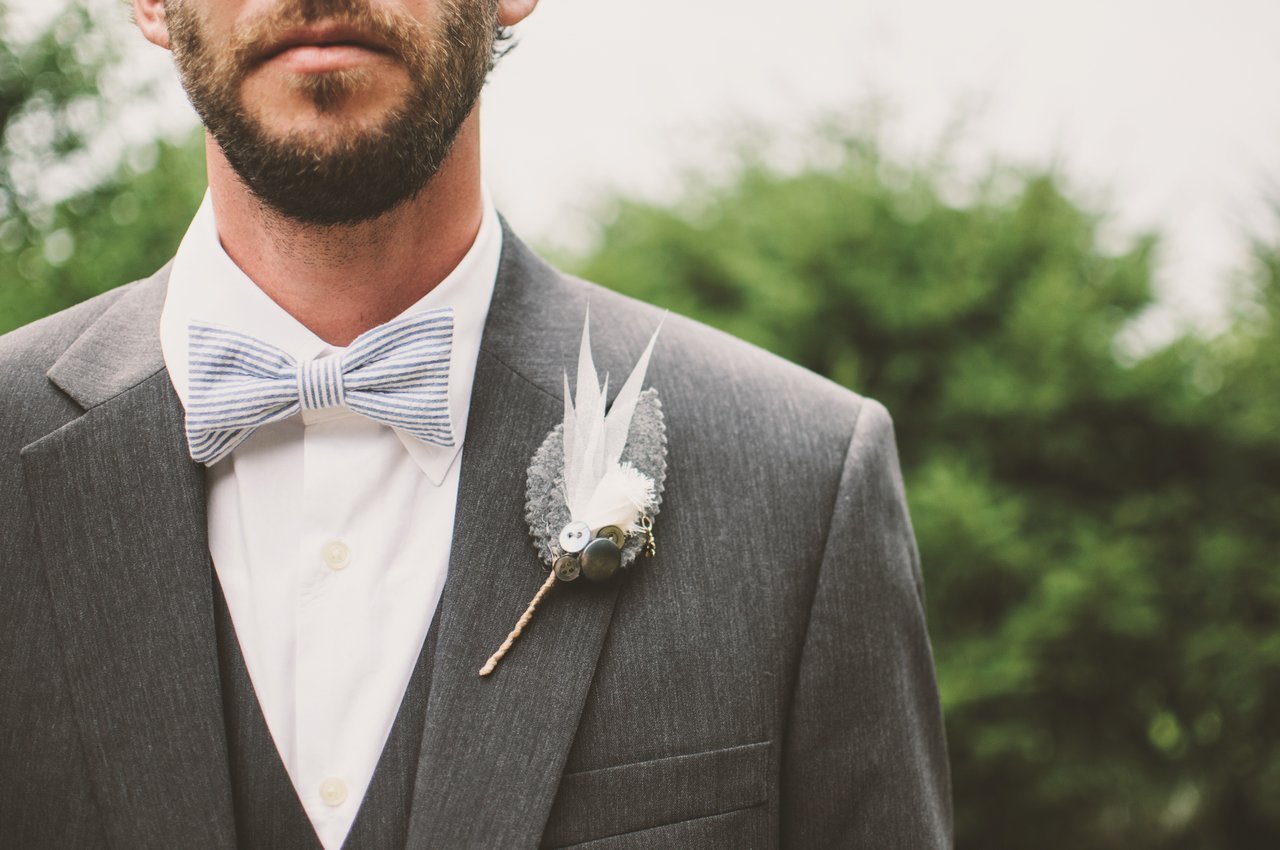
Suits are surprisingly more low maintenance than one would imagine. Simply spot clean with water after use - as soon as possible if you've had a spill, to prevent stains from setting in - and hang them in a well-ventilated area away from sunlight before putting them back in the closet.
To keep your suit in top condition, invest in an at-home steamer for touch-ups in-between dry cleaning treatments. In a pinch, take it to the bathroom—your post-shower steam will also help to smooth out any wrinkles. For a more thorough cleanse and long-term storage option, consider our final tip.
Store your suit safely during the off-season
Always take your suit to the dry cleaner's after a few wears and before the season is over. Removing stains or unwanted smells will help prolong the life of your clothing. Once it's clean, store your suit upright in a garment bag in your closet to keep natural fibers looking their best. How you maintain your suit is just as important as how you wear it.
With these complete tips and tricks, you'll be well suited for any occasion—be it work, play or a little bit of both. If you need assistance with caring for your suit, our clothing care experts know how to care for your items better than anyone else. Schedule a Rinse dry cleaning pickup today!
Photos: Mélanie Villenueve, Angelina Litvin, Scott Web

Keep your formal shoes looking their best before, during, and after your next wedding.
When it comes to special occasions like weddings, you need to keep your formal shoes ready. Sure, they can take a break when you're watching the bride make her way down the aisle. But when the reception starts it's go time, and your footwear can easily get scuffed and damaged on the dance floor or dirtied at an outdoor wedding. Here's our shoe care guide to help you keep your best accessories in tip-top shape for every wedding this season.
Leather shoes: a care guide

Leather shoes are the foundation of formal wear. Before taking your new kicks out for a night on the town, layer a coat of water repellent to protect the leather against the environment. These protective formulas are widely available in spray formats for a fuss-free application (suede materials are especially sensitive to water). Besides weatherproofing, taking your shoes to a shoe care service to have the taps fastened will help your pair endure for a lot longer. For an extra polish, apply a thin layer of leather conditioner and gently buff with a soft cloth.
Pro Tip: Treat your favorite pair of dress shoes or heels to new soles when you notice increasing wear and tear—this helps them stay with you through thick and thin.
All about that heel: straps, stilettos and sandals
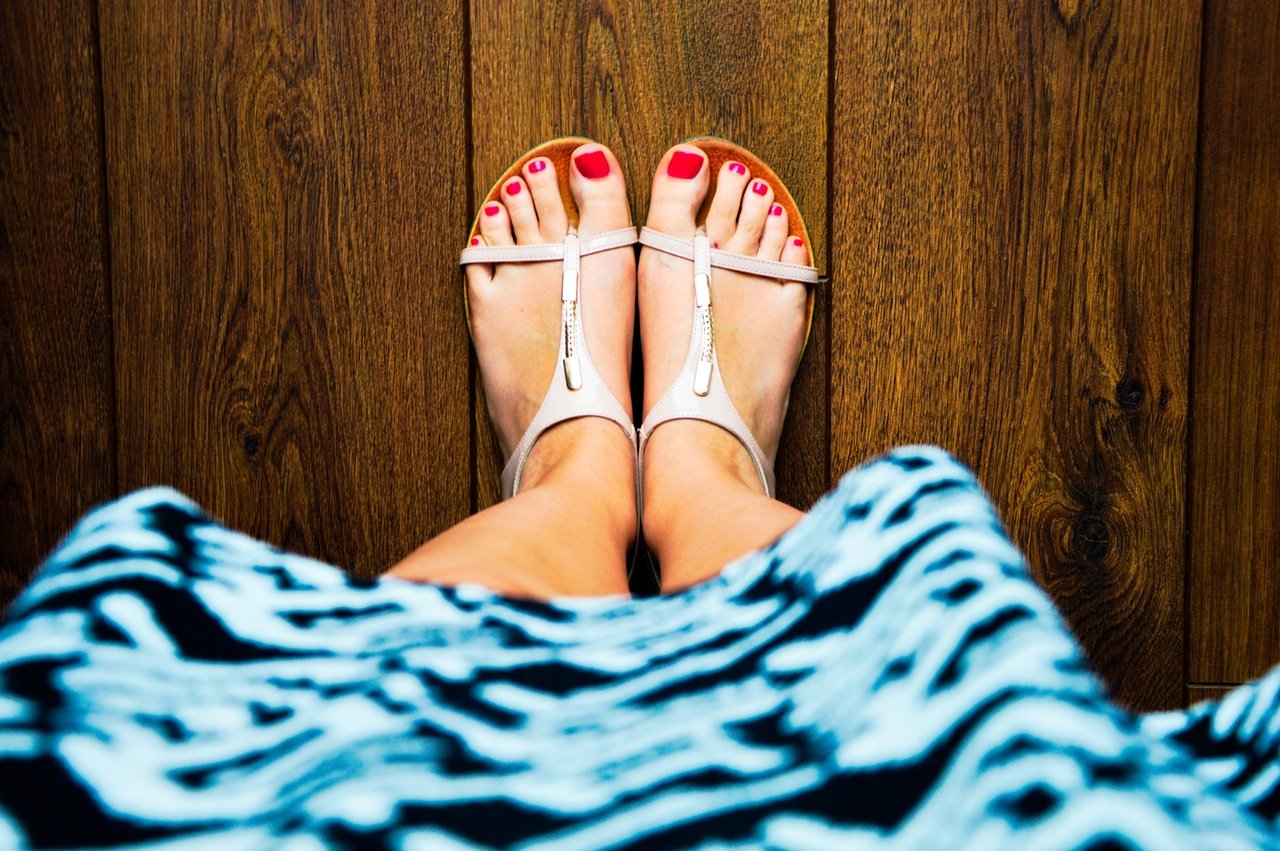
While extra-high heels may appeal to the stylish set, there are more practical options to help put your best foot forward. Take care when choosing a new pair of heels. Thin straps or stilettos are more likely to break; not to mention, they're difficult to keep on when you're out on the dance floor. A lower heel may be more comfortable, and you won't have to worry about the heel snapping off. Outdoor or destination weddings are increasingly popular, so take into consideration sensible yet fashion-forward footwear for your wedding guest wardrobe. Travel-friendly options include a chunkier heel or dressier sandal to complement any outfit. Plus, they're a sturdy choice to take you from the opening ceremony to the dinner reception.
Pro Tip: Dancing under white tents and fairy lights in the garden? Pack a pair of wedges or sandals with flat heels instead—they won't sink into grass or sand. Speaking of grass, you can tackle any stains with a damp cloth, warm water and a touch of soap. Don't forget to pack your shoes in a dust bag before you board that flight to Napa Valley or Costa Rica!
Long-term care tips
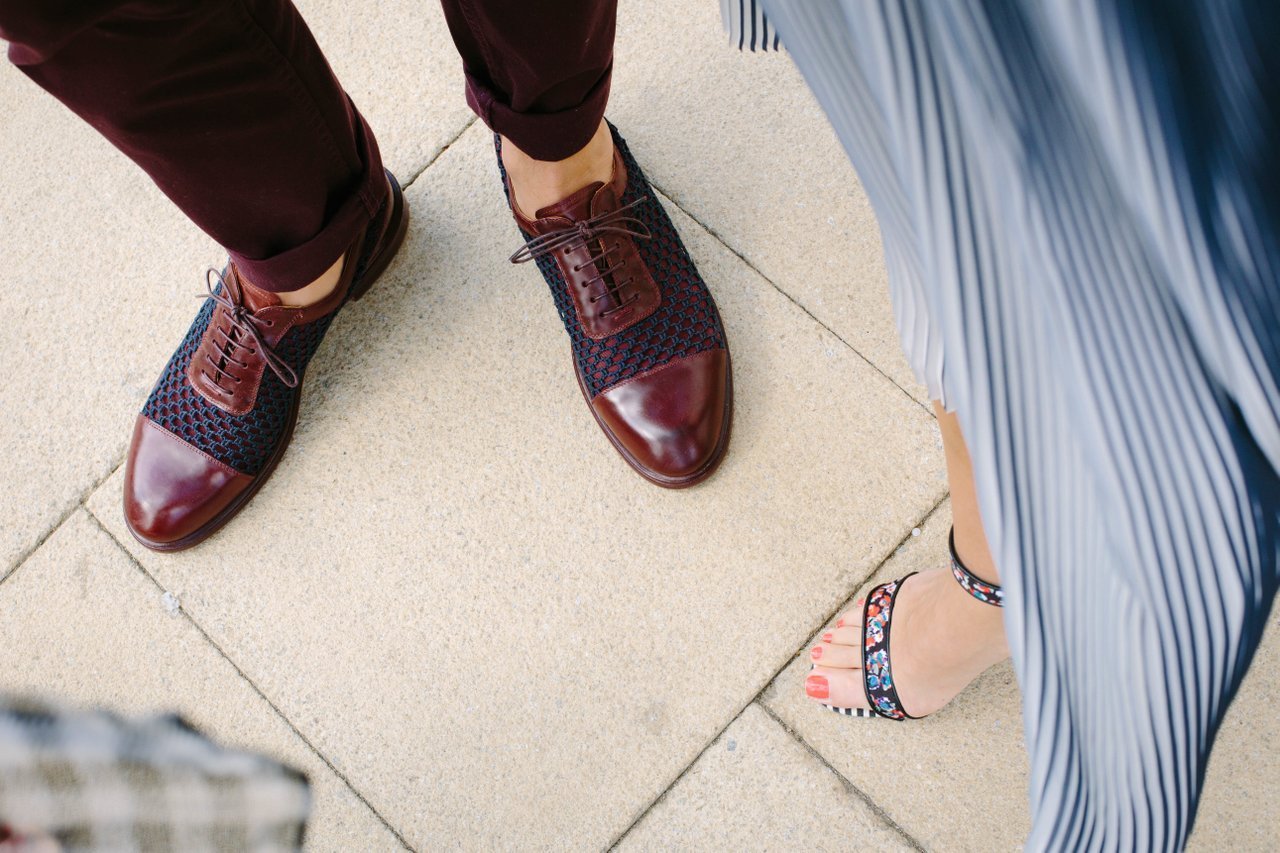
To make your favorite pair of heels or oxfords last, invest in a seasonal reheel at a trusted shoe care service. When it's time to switch up your closet at the end of the season, store shoes in their boxes stuffed with acid-free tissue paper to keep them in mint condition and place shoe trees in each shoe to maintain their shape. While you can opt to replace your footwear, dress shoes can be a pretty expensive purchase. Instead, by cleaning and storing your shoes properly, you'll be making a worthy investment that will allow you to get more mileage out of them for years. And if your pair happens to go great with any formal outfit you don, you'll want to keep those shoes with you for as long as possible.
Now that you can have fun on the dance floor—without destroying your feet—know how to care for the rest of your wedding attire with our handy guide.
Photos: Tymonko Galyna / Shutterstock.com, Sweet Ice Cream Photography, stock.tookapic.com, Jason Briscoe
Topics
Rinse Drop
We offer pickup and delivery if you can’t be present between 8pm and 10pm.
Our Valet will pick up or deliver your order to your doorstep or concierge, at which point you’ll receive a text with a photo showing where your items were left.
You can enable Rinse Drop on any (or all) of your orders.

